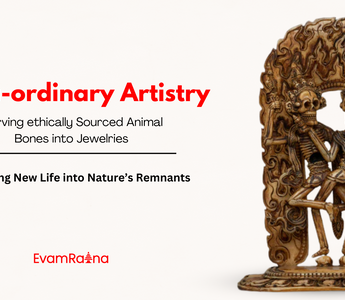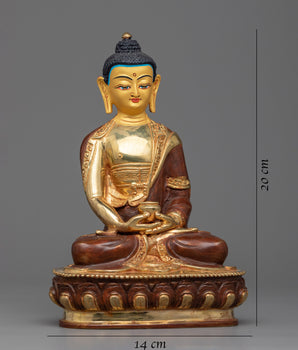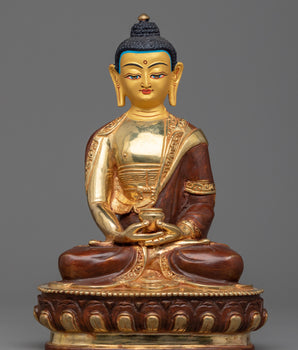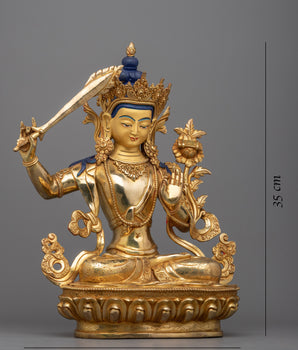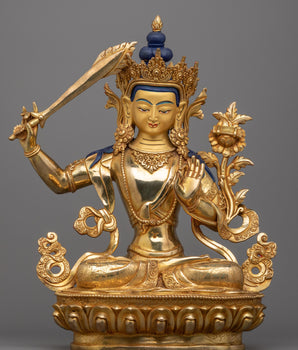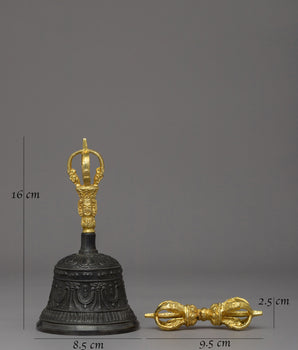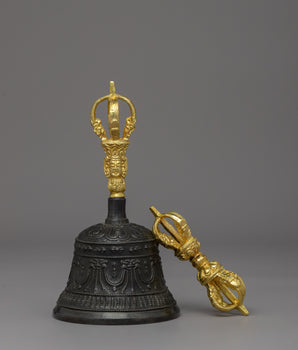Introduction: Breathing New Life into Nature’s Remnants
Jewelry has long been a symbol of beauty, craftsmanship, and personal expression, transcending generations and cultures. From the shimmering brilliance of gold to the timeless allure of diamonds, traditional materials have dominated the industry for centuries. However, a fascinating and ethically conscious form of jewelry-making is steadily gaining attention—one that intertwines history, sustainability, and artistic ingenuity: carving ethically sourced animal bones into stunning, wearable art.
This ancient yet continuously evolving craft breathes new life into what would otherwise be discarded remnants of nature. Through meticulous hands and creative vision, these bones are transformed into exquisite necklaces, earrings, rings, and bracelets, each carrying a distinct story of cultural heritage, environmental consciousness, and extraordinary artistry. Unlike mass-produced jewelry that often leaves a heavy ecological footprint, bone jewelry champions the ideals of repurposing, reducing waste, and celebrating the natural cycle of life.
But what sets bone jewelry apart from conventional adornments? How do artisans ensure ethical sourcing while preserving the intricate balance between nature and human creativity? What techniques go into sculpting these delicate masterpieces, and why are they becoming a preferred choice for those seeking something truly unique?
In this deep dive, we’ll uncover the mesmerizing world of bone jewelry—where forgotten materials are transformed into treasured adornments, blending history, sustainability, and craftsmanship into timeless pieces of wearable art.
The Ancient Roots of Bone Carving in Jewelry

Bone carving as a form of jewelry-making is an ancient practice that dates back thousands of years, deeply rooted in various cultures across the globe. Long before the discovery of metals, early civilizations used animal bones to craft adornments, not just for aesthetic purposes but also as symbols of power, protection, and spirituality. Prehistoric humans fashioned bone pendants, beads, and amulets, often engraving them with intricate patterns that held cultural or mystical significance. Indigenous communities, such as the Maori of New Zealand and the Inuit of the Arctic, have long revered bone carving, believing that these pieces carry ancestral energy and spiritual strength. In medieval Europe, bone jewelry was often associated with devotion and religious iconography, while in Africa and Asia, it played a significant role in tribal identity and storytelling. Over centuries, bone carving evolved, yet it continues to be cherished today, not only for its artistic beauty but also for its deep historical and cultural significance.
-
Prehistoric Origins: Archaeological discoveries show that ancient humans used animal bones to create pendants, beads, and amulets, often infused with spiritual significance.
-
Indigenous Practices: Native American, Maori, and Inuit cultures have deep-rooted traditions of bone carving, believing these adornments carry protective energies.
-
Medieval & Renaissance Eras: During the Middle Ages, bone jewelry flourished in Europe, often symbolizing status or religious devotion.
Modern Resurgence of Bone Jewelry

Today, as sustainability takes center stage in the world of fashion and accessories, the ancient craft of bone carving is experiencing a remarkable revival. With growing awareness about ethical consumerism and environmental responsibility, more people are seeking alternatives to mass-produced jewelry made from newly mined metals and gemstones. This shift has led to a resurgence of interest in bone jewelry, where artisans are rediscovering the intricate techniques that have been passed down through generations.
Unlike the past, where bone carving was primarily a necessity or a cultural practice, modern artisans are elevating it into a refined and sophisticated art form. They are skillfully blending traditional hand-carving methods with contemporary design trends, creating pieces that are both visually striking and deeply meaningful. Advances in tools and techniques have also allowed for greater precision and intricate detailing, making bone jewelry more diverse in style and appeal. Whether inspired by tribal patterns, minimalist aesthetics, or intricate floral motifs, today’s bone jewelry reflects a perfect harmony between heritage craftsmanship and modern innovation.
This renewed appreciation for bone carving is not just about aesthetics; it is also about sustainability, ethical sourcing, and a desire for unique, handcrafted pieces that tell a story. As more people embrace slow fashion and seek meaningful accessories that align with their values, bone jewelry continues to gain recognition as a timeless and eco-conscious art form that celebrates both nature and human creativity.
-
Why Now? The demand for sustainable and ethical fashion is driving interest in alternative materials.
-
Handmade Appeal: Unlike mass-produced jewelry, hand-carved bone pieces exude uniqueness, making them highly desirable.
-
A Fusion of Old and New: Artists are using modern tools to refine their craft, ensuring precision while preserving authenticity.
Ethical Sourcing—A Crucial Element in Bone Jewelry Making

Ethical sourcing is at the heart of bone jewelry craftsmanship, ensuring that no animals are harmed solely for decorative purposes. Artisans carefully acquire bones through responsible means, such as naturally deceased animals, byproducts from sustainable farming, or traditional indigenous practices that honor the entire animal. This approach promotes sustainability, reduces waste, and respects the natural cycle of life.
By prioritizing ethical sourcing, jewelry makers not only create unique, eco-friendly pieces but also support ethical trade and fair labor practices. Conscious consumers increasingly seek transparency, favoring brands and artisans who adhere to ethical and sustainable standards. In a world shifting towards responsible fashion, ethically sourced bone jewelry stands as a testament to mindful creativity and environmental respect.
Ethically sourced animal bones are obtained without harming animals for the sole purpose of jewelry-making. Instead, these materials come from:
-
Natural Deaths: Bones from animals that have died of natural causes.
-
Byproducts of Sustainable Farming: Many artisans work with farmers to repurpose bones that would otherwise go to waste.
-
Legal & Ethical Harvesting: Some indigenous communities use bones from traditionally hunted animals, ensuring that every part is respectfully utilized.
Why Ethical Sourcing Matters
Ethical sourcing in jewelry-making is crucial for sustainability, environmental responsibility, and animal welfare. When artisans use ethically sourced bones—obtained from natural deaths or byproducts of sustainable farming—they ensure that no animals are harmed solely for fashion. This practice reduces waste, promotes responsible craftsmanship, and supports fair trade by empowering local artisans. Consumers are increasingly valuing transparency, seeking jewelry that aligns with their ethical beliefs. Ethical sourcing also prevents exploitation and protects endangered species, fostering a deeper connection between wearers and nature. Selecting jewelry sourced ethically signifies a commitment to uncompromising beauty, where artistry and integrity coexist harmoniously. Consumers today demand transparency. Ethical sourcing ensures that:
-
No animals are harmed for vanity.
-
Sustainability is prioritized.
-
Local artisans and small businesses benefit from fair trade practices.
Many jewelry makers also collaborate with conservation organizations to promote responsible material usage, ensuring that endangered species are never exploited.
The Artistic Process—How Bones Transform into Wearable Art

Transforming bones into exquisite jewelry is a meticulous process that blends traditional craftsmanship with modern techniques. It begins with ethically sourced bones, carefully cleaned, sterilized, and dried to ensure durability. Artisans then carve, engrave, and shape the material using specialized tools, refining intricate designs that range from tribal patterns to contemporary motifs. The final piece is sanded, polished, and sometimes adorned with inlays like gemstones or natural dyes. This process transforms discarded remnants into wearable art that embodies sustainability, cultural heritage, and extraordinary creativity, thereby making each piece truly unique.
Step 1—Selecting the Right Bone
Selecting the right bone is crucial in the process of crafting high-quality jewelry. Artisans choose bones based on their durability, texture, and aesthetic appeal. Common choices include deer antlers, which are naturally shed and offer unique patterns, and bones from farmed animals like cows and buffalo, ensuring sustainability. Fish bones are also popular for their lightweight and delicate nature. The selection process emphasizes both functionality and artistry, ensuring that each bone is suitable for intricate carving and long-lasting wear.
Step 2—Cleaning and Preparing the Bone
Once the bone is selected, the cleaning and preparation process begins. First, the bone is carefully boiled and sterilized to remove any organic matter and prevent any potential bacterial growth. Next, it undergoes drying and bleaching, often by being sun-dried, which gives it a natural ivory-like appearance. Finally, the bone is sanded and smoothed to create a flawless surface, ready for intricate carving. This meticulous preparation ensures the bone is both safe to work with and visually appealing for jewelry-making.
Step 3—The Intricate Carving Process
Bone jewelry creation starts with intricately carved raw bone materials, which expert artists turn into decorative masterpieces. Various woodworking tools, including hand saws for coarse shaping along with engraving tools for sharp details, allow master artisans to reveal original designs in each crafted piece. The careful labor of skilled artisans means every piece of jewelry achieves flawless curves and lines to create distinctive offerings that showcase synonymous excellence with artistry.
Through their artistic vision, artists design mesmerizing patterns that integrate both Celtic knotted designs and tribal motifs, which get their inspiration from natural elements and mythological traditions.
Step 4—Adding Personal Touches
Bone jewelry creation starts with intricately carved raw bone materials, which expert artists turn into decorative masterpieces. Various woodworking tools, including hand saws for coarse shaping along with engraving tools for sharp details, allow master artisans to reveal original designs in each crafted piece. The careful labor of skilled artisans means every piece of jewelry achieves flawless curves and lines to create distinctive offerings that showcase synonymous excellence with artistry.
Through their artistic vision, artists design mesmerizing patterns that integrate both Celtic knotted designs and tribal motifs, which get their inspiration from natural elements and mythological traditions.
Why Bone Jewelry is More Than Just Fashion

Bone jewelry is not just about aesthetics—it represents a deeper connection to nature, sustainability, and cultural heritage. Unlike mass-produced accessories made from mined metals and synthetic materials, bone jewelry embraces the philosophy of repurposing and ethical craftsmanship. It transforms naturally discarded or ethically sourced animal bones into exquisite adornments, ensuring that nothing goes to waste.
For many, wearing bone jewelry is symbolic. In various cultures, it signifies strength, protection, and a link to ancestry, as indigenous traditions often view bones as carriers of wisdom and spiritual energy. Additionally, it serves as a statement of eco-conscious fashion, appealing to those who value sustainability over excess. Beyond its visual appeal, bone jewelry tells a story—of artisans preserving ancient carving techniques, of materials given a second life, and of wearers choosing ethical beauty over fleeting trends. It is not just an accessory; it is a testament to mindful living and extraordinary artistry.
Bone jewelry represents an eco-conscious alternative to mass-produced accessories. Unlike mining for metals or gemstones, bone carving:
-
Reduces waste by repurposing natural materials.
-
Supports ethical craftsmanship over exploitative labor.
-
Minimizes environmental impact compared to traditional jewelry-making.
Spiritual and Cultural Significance
For many, wearing bone jewelry is deeply symbolic:
-
A Connection to Ancestry—Indigenous cultures around the world have long held the belief that bone jewelry carries a deep ancestral energy, serving as a powerful connection between the wearer and their lineage. For many tribes and communities, bones are more than just physical remnants; they are sacred materials infused with the spirit and wisdom of those who came before.
-
Protection and Strength—In many cultures, bones are more than just physical remnants—they carry deep symbolic meanings rooted in strength, endurance, and the spirit of survival. Some traditions associate bones with resilience and the warrior spirit. believing that wearing or carrying them imbues the wearer with courage, determination, and protection.
-
Personal Meaning—Custom-carved pieces can hold deep sentimental value, serving as powerful talismans, symbols of protection, or cherished family heirlooms passed down through generations. These intricately designed adornments often carry personal significance, whether representing cultural heritage, spiritual beliefs, or a connection to ancestors.
Unique Aesthetic Appeal
Bone jewelry has a unique aesthetic appeal that sets it apart from traditional adornments. Its organic textures, natural hues, and varied patterns create a raw, earthy beauty that resonates with many. Each piece, carved by hand, carries its own distinct character—no two items are ever exactly alike. Whether it’s the intricate detailing of a carved pendant or the smooth, polished finish of a bone ring, bone jewelry offers a sense of authenticity and craftsmanship. The subtle imperfections and natural markings on the bone add to its charm, creating pieces that feel both timeless and deeply connected to nature.
Finding and Caring for Bone Jewelry—The Evamratna Way

At Evamratna, we believe that bone jewelry is more than just an accessory—it’s a piece of history, craftsmanship, and ethical fashion. Finding high-quality, ethically sourced bone jewelry requires attention to detail. Look for artisans who emphasize sustainable practices, hand-carved designs, and fair trade sourcing. Authentic bone jewelry should come from naturally discarded or ethically obtained bones, ensuring that no harm is done to animals.
Caring for your bone jewelry is essential to maintain its beauty and longevity. Avoid prolonged exposure to water, excessive heat, and harsh chemicals. Store your pieces in a soft pouch to prevent scratches and polish them occasionally with a light application of coconut oil or beeswax to enhance their natural luster.
At Evamratna, our bone jewelry collections reflect heritage, artistry, and sustainability. By choosing ethically crafted bone jewelry, you embrace a unique, eco-conscious style that lasts for generations. Always check for transparency in sourcing and craftsmanship before purchasing.
Caring for Bone Jewelry

Correct maintenance of bone jewelry will help extend its lifespan while maintaining its original natural appearance. Bone needs delicate care because it has both porous structure and organic composition. The jewelry needs protection from excessive water contact since water breaks down the material. The best method for protecting your jewelry is to place it inside a fabric pouch and keep it in a dry environment that stays cool. A soft cloth with coconut oil or beeswax as polish should be applied periodically to preserve the shine of bone jewelry. Bone jewelry requires storage avoidance from harsh chemicals, direct sunlight and perfumes because these elements may create brittleness within the material. Long-term care will maintain bone jewelry as a durable accessory that will stay with you for many years.
With the right care, bone jewelry can last for generations, carrying stories and tradition forward.
Conclusion: A Renaissance of Ethical Beauty
Bone jewelry serves as a statement that combines three attributes: advanced sustainability practices along with artistic excellence and sustainable practices for natural cycles. Every precisely carved jewelry piece exists as a deliberate tribute to discarded materials because these artists turn worthless materials into attractive, timeless creations. People who choose ethically acquired bone accessories join a rising movement because they value artisanal creation compared to quantity production, and they prioritize stories from authentic sources instead of short-lived fads while demonstrating their preference for ethical standards above excessive consumption.
People are encouraging the powerful return of this ancient artistic practice because sustainable luxury has developed from a niche category to become a basic necessity in today's world. People now seek ethical alternatives to traditional luxury materials such as gold and diamonds and bone jewelry provides an appealing answer by uniting cultural heritage with modern innovation through artistic expressions resulting from ethical approaches to traditional values. Beauty exists in a way that respects nature through this practice. Through its enterprising mission it aligns with an opportunity to glorify life together with historic significance and imaginative artwork while honoring social responsibility in creation.

